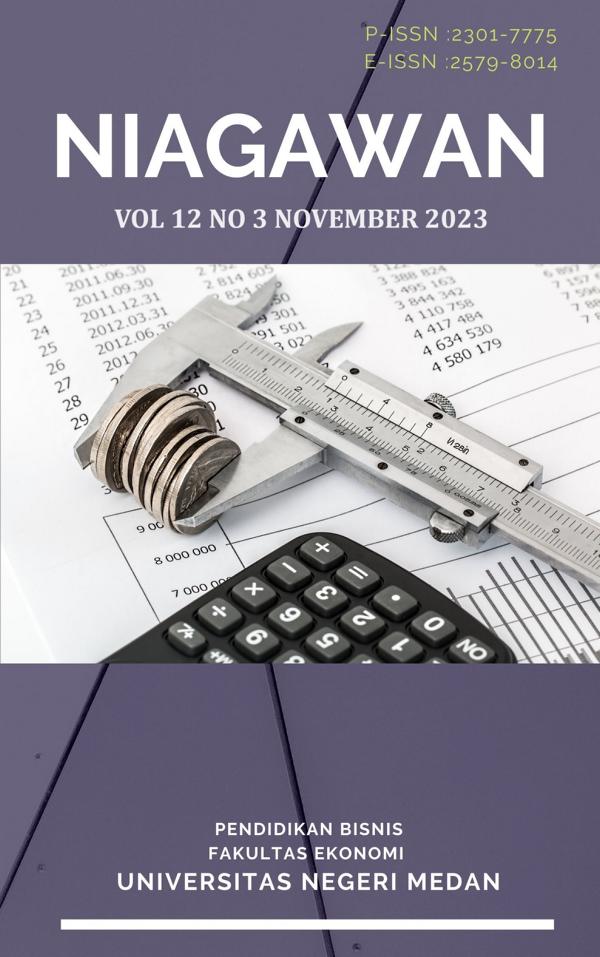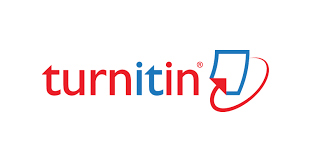PENGARUH LEADERSHIP DAN WORKFORCE AGILITY TERHADAP ORGANIZATIONAL AGILITY DENGAN COMMUNICATION SEBAGAI VARIABEL MODERATING PADA PT ANGKASA PURA AVIASI
DOI:
https://doi.org/10.24114/niaga.v12i3.50972Keywords:
Leadership, Workforce Agility, Communication, Organizational AgilityAbstract
Tujuan dari penelitian ini adalah untuk mengetahui pengaruh leadership dan workforce agility pada organizational agility dengan communication sebagai variabel moderating pada PT Angkasa Pura Aviasi. Penelitian ini menggunakan metode kuantitatif meliputi pengumpulan analisis interpretasi. Sampel pada penelitian ini menggunakan teknik penarikan sampel yang digunakan berdasarkan rumus Slovin, dan berdasarkan perhitungan slovin diatas maka jumlah sampel dalam penelitian ini adalah ≥ 231 karyawan PT Angkasa Pura Aviasi. Teknik pengumpulan data pada penelitian ini menggunakan metode angket, sedangkan jenis penelitian ini adalah kuantitatif dan analisis statistik SEM-PLS. Hasil Penelitian ini membuktikan bahwa secara langsung leadership berpengaruh positif dan signifikan terhadap organizational agility. workforce agility berpengaruh positif dan signifikan terhadap organizational agility. Communication memoderasi pengaruh leadership terhadap organizational agility. Communication memoderasi pengaruh workforce agility terhadap organizational agility.References
REFERENSI
Agus, N. S., Lie, D., Efendy, & Julyanthry. (2019). Pengaruh Rekrutmen Dan Penempatan Terhadap Kinerja Pegawai Pada Kantor Pelayanan Perbendaharaan. Maker: Jurnal Manajemen ISSN : 2502-4434 Vol. 5, 5.
A Juliandi. (2018). Structural equation model based partial least square (SEM-PLS): Menggunakan SmartPLS. Jurnal Pelatihan SEM-PLS Program Pascasarjana Universitas Batam. https://doi.org/10.5281/zenodo.12437 77
Bulent & Mert, Gozde. (2021).Organizational Agility, Competitive Capabilities, and the Performance of Health Care Organizations During the Covid-19 Pandemic. Jurnal: Central European Management Jurnal
Nasrul. (2021). Pengaruh Kepemimpinan, Budaya Organisasi dan Motivasi Kerja terhadap kinerja guru pada yayasan h.datuk abdulllah tanjung morawa. Tesis: Universitas Muhammadiyah Sumatera Utara
Hamali,
Expanded Assessment of PLS-SEM in Information Systems Research. Industrial Management & Data Systems.
Arif Y usuf (2016). Pemahaman Manajemen Sumber Daya Manusia : Strategi Mengelola Karyawan. Cetakan Pertama. Yogyakarta: CAPS.
Azmy, A. (2021). The effect of employee engagement and job satisfaction on workforce agility through talent management in public transportation companies. Media Ekonomi dan Manajemen, 36(2), 212-229.
Darino, B. L., Sieberer, M., Vos, A., & Williams, O. (2019). What defines an agile organization. McKinsey & Company, 1“14. Retrieved from https://www.mckinsey.com/business- functions/organization/our- insights/performance-management-in- agile-organizations
Essa, S dkk. (2020). A Conceptual Exploration of Factors Affecting Agility in Organizations. International Journal of Management
Ghozali, I. (2013). Aplikasi Analisis Multivariate dengan Program IBM SPSS19. Universitas Diponegoro.
Ghozali, I. (2014). Aplikasi analisis Multivariate dengan Program SPSS. Badan Penerbit UNDIP ,Semarang.
Hair, J. F., Sarstedt, M., Hopkins, L., & Kuppelwieser, V. G. (2013). Partial Least Squares Structural Equation Modeling (PLS-SEM): An Emerging Tool in Business Research. European Business Review.
Hair, J., Hollingsworth, C., Randolph, A., & Chong, A. (2017). An Updated and
Holbeche L. (2018). The Agile organization (2nd ed.). London: Kogan Page.
Kartini Kartono .(2013). Pemimpin dan Kepemimpinan: Apakah kepemimpinan abnormal itu?, Edisi Pertama. PT. Rajawali. Jakarta.
Lawasi, Eva Silviani & Boge Triatmanto. (2017). Pengaruh Komunikasi, Motivasi dan Kerjasama Tim terhadap Peningkatan Kinerja Karyawan. Jurnal Manajemen
dan Kewirausahaan, Merdeka Malang, 5(1).
Mangkunegara, Anwar Prabu Manajamen Sumber Daya Manusia Perusahaan. Cetakan Ke-12. Bandung: PT Remaja Rosdakarya.
Muduli,
A. (2017). Workforce agility: Examining the role of organizational practices and psychological empowerment. Global Business and Organizational Excellence, 36(5), 46“ 56.
Universitas
(2017).
Panduwinarsih dkk (2021). Organizational agility maturity level of an airport operator Indonesia. International journal of progressive sciences and Technologies (IJPSAT)
Panduwinarsih, Pina. (2021). Pengaruh Adhocracy Culture dan Workforce Agility terhadap organizational agility. Tesis: Univeristas Sumatera Utara
Pulungan, Elmaya Sari. (2022). Pengaruh Clan Culture dan Workforce Agility terhadap organizational agility. Tesis: Univeristas Sumatera Utara
Pulungan, dkk (2022). Organizational agility maturity level State Electricity Company. International journal of progressive sciences and Technologies (IJPSA T)
Setiawan, Agus Bahar dan Abd. Muhith (2013) Transformational Leadershif. Jakarta: PT. Raja Grafindo Persada.
Sherehiy, B., & Karwowski, W. (2014). The relationship between work organization and workforce agility in small manufacturing enterprises. International Journal of Industrial Ergonomics.
Storme, M., Suleyman, O., Gotlib, M., & Lubart, T. (2020). Who is agile? An investigation of the psychological antecedents of workforce agility. Global Business and Organizational Excellence, Vol. 39, Issue 6, p. 28-38. DOI:10.1002/joe.22055.
Sugiyono, S. (2018). Metode Penelitian Kuantitatif, Kualitatif dan R&D. Bandung: Alfabeta.
Sutardji. (2016). Perencanaan Dan Pengembangan Sumber Daya Manusia (1 ed.). Yogyakarta: Dee Publish.
Downloads
Published
Issue
Section
License
Authors who publish in this journal agree to the following terms:
- Authors retain copyright and grant the journal the right of first publication, with the work simultaneously licensed under a Creative Commons Attribution License that allows others to share and adapt the work with an acknowledgment of the work's authorship and initial publication in this journal.
- Authors can enter into separate, additional contractual arrangements for the non-exclusive distribution of the journal's published version of the work, with an acknowledgment of its initial publication in this journal.
- Authors are permitted and encouraged to post their work online before and during the submission process, as it can lead to productive exchanges and earlier and greater citation of published work. Where authors include such work in an institutional repository or on their website, we request that they include a statement acknowledging the Jurnal Perspektif Pembiayaan dan Pembangunan Daerah, including the name of the journal, the volume number, and a web link to the journal item.
- Authors should be aware that the Creative Commons Attribution 4.0 International License (CC BY 4.0) permits readers to share (copy and redistribute the work in any medium or format) and adapt (remix, transform, and build upon the work) for any purpose, even commercially, provided they also give appropriate credit to the work, provide a link to the license, and indicate if changes were made. They may do these things reasonably but not in any way that suggests the author or the publisher endorses their use.
NIAGAWAN by Program Studi Pendidikan Bisnis Fakultas Ekonomi Universitas Negeri Medan is licensed under CC BY-NC 4.0





